Experts believe the ongoing labor shortage will linger into the foreseeable future. Now is the time for business leaders to implement automated strategies into their food processing and packaging facilities. Doing so will prove among the best ways to increase productivity and efficiency in the coming years. Let’s discuss.
While open positions remain at an all-time high, companies across industries still have difficulty filling available roles. Few sectors, however, have felt the shortage of bodies perhaps as much as food manufacturing. Experts believe the ongoing labor shortage will linger into the foreseeable future, though recent data offers a glimmer of hope.
According to February 2022 data from the Bureau of Labor Statistics, employment in food manufacturing facilities increased by 7200, totaling 1.671 million workers. Still, while this is a sign of improvement, it is not enough to fix the problem. Industry leaders must consider solutions such as integrating automation into their food processing procedures to turn profits in the face of unstable labor markets and rising inflation and labor costs.
While the labor force is rebounding, it’s not enough to keep up with increased consumer demand for food and beverage. Human labor can only be so productive—which pushes more businesses towards automation every day. It’s no wonder that recent figures predict the market for food processing automation will reach a value of $29.4 billion by 2027, growing at a CAGR of 9.5% over the next several years. Now is the time for business leaders to implement automated strategies into their food processing and packaging facilities. Doing so will prove among the best ways to increase productivity and efficiency in the coming years.
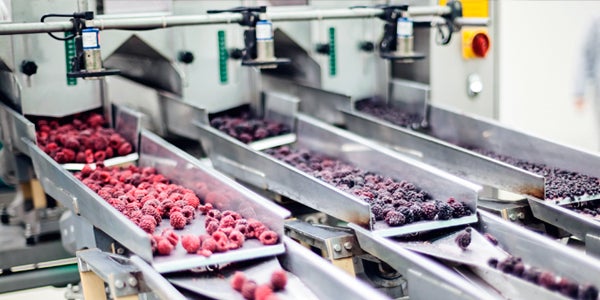
Automation in Food Processing and Fresh Produce: Applications to Mitigate Inflation and Labor Shortages
While automation is not new to the food processing sector, recent inflation spikes forced the hands of many industry leaders. The paths ahead were clear—step up their game and find ways to automate or get snarled in the inflation wave. Many facilities determined this approach made financial sense and turned to the former to fill the gaps in their labor forces. According to research from Deloitte Insights, as many as three-in-five executives indicate serious attempts at automating as much of the process as possible.
Business leaders in food processing have plenty of solution providers to turn to, ready to step up and fill labor gaps with state-of-the-art automated systems. But what more do they need to know to form an appropriate plan for automation in food processing? What processes are best suited for automation?
Vertical farming has emerged as one trending alternative to traditional production, bringing fresh produce to densely populated urban environments. Currently estimated to be a $3 billion industry, vertical farming leverages automation in food processing to increase productivity in warehouses. But you don't need to start from scratch building a mechanized, vertical urban farm in order to reap the rewards. Instead, it’s more prudent to contract solutions companies to retrofit their systems in your existing facility. All food production manufacturers can significantly benefit from automation in the warehouse.
For example, fruit and vegetable picking is increasingly becoming the domain of machinery. In fact, in 2021 BrilloPak won the Food Processing Robotics and Automation Award for its four-arm delta UniPAKer robot, which expedites packing processes by loading up to 120 packs per minute! Food packing is one of those steps that is both faster and more accurate when run by machinery. Robots work around the clock, and you can ensure less subjective quality assessments with an algorithm than with a human packer.
Smart warehousing Internet of Things (IoT) devices to keep rigid temperature controls in storage can serve as another boon for food processing leaders seeking automation avenues. These devices can regulate temperatures in different areas of storage to exacting degrees to maximize freshness. Considering the hiccups abounding in current supply chains when it comes to moving products to market, ensuring optimal conditions in storage is of the utmost importance.
An Example: Retail Grocer Mercadona
As a case study, let’s look at how Mercadona, a family-run industry leader in Spain’s grocery retail sector, invested in robotic automation upon opening a brand new distribution center in Granada. The company minimized handling times by automating as many processes as possible, thus maximizing freshness and shelf life.
Mercadona’s new DC aimed to manage 6,000 stock-keeping units (SKUs) while moving more than 3.5 million cubic feet of monthly product. The warehouse also featured several temperature-controlled zones for various product types, including two different refrigerated zones at 37ºF and 53ºF, respectively. Finally, it utilized a -9ºF zone for frozen goods and a production area for bread. It sounds like a mountain of products to manage, but it’s an easy task for new-age automation.
A robotic storage system automates crate picking for fresh produce and meat. Automation manages about 300 SKUs between roughly 30,000 crates each day. Meanwhile, a warehouse control, crate stacking, and conveyor system manage the flow of material goods. These systems, working alongside manual laborers, act as an island of automation, preparing orders to send to retail stores without further processing. It’s a self-sufficient system, handling reception, put-away, item location, retrieval, sorting, and assembly.
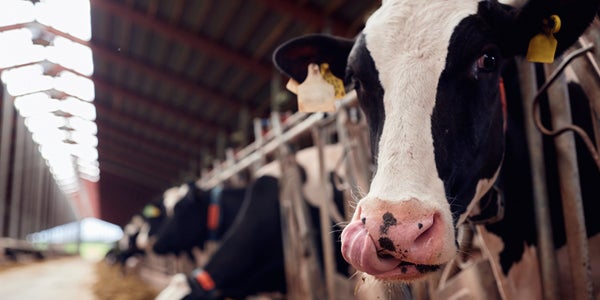
Automating Dairy Processing and Production: Maintain Quality While Addressing Challenges
Fresh produce doesn’t have a lock on automation. In fact, many agriculture procedures leverage the technology to boost profits and drive efficiency. Dairy farms in particular have taken to automation, resulting in both productivity gains and sustainable animal welfare. Automation in food processing on dairy farms also increases the quality of life for farm owners and staff.
Let’s look at one of the most time-consuming jobs among dairy farm workers: milking.
Automating the milking process has come as a relief for many dairy farmers, yet automatic milking systems (AMS) are not new. In fact, the first AMSs were used on dairy farms in the Netherlands in 1992. With AMSs, cows can be milked several times per day while minimizing the need for human labor. Now, those regulated to milking cattle can focus on more important tasks—tasks requiring a human touch.
AMSs also provide invaluable real-time data regarding a cow’s health, welfare, nutrition, and behavior. The human eye may not catch all those minute details. With automation, farms can address small issues with cattle before they become major problems.
Oakfield Corners Dairy leverages automated milking systems to milk 1,800 cows on dairy farms between New York and Ohio. Farm owners Jonathan and Alicia Lamb recognized how difficult it was to find good help amidst labor shortages. To solve their problem, they turned to automation. According to Larry Tranal of Iowa State University, those savings can be upwards of $44,000/year, as they decrease milking labor hours by 75%. According to the Lambs, adjusting to the new systems should take about three to four months. By then, operators, robots, and livestock should all be on the same page.
Besides milking, automation also tackles other labor-intensive tasks such as feeding and herd management. By automating herd management systems, you gain access to invaluable data analytics that provide insight into several aspects of your herd. You can easily cultivate reports about the fertility and production of each animal. You can also dig into the records of culled, sold, or deceased animals to maintain an accurate archive of herd health, treatment, and wellbeing.
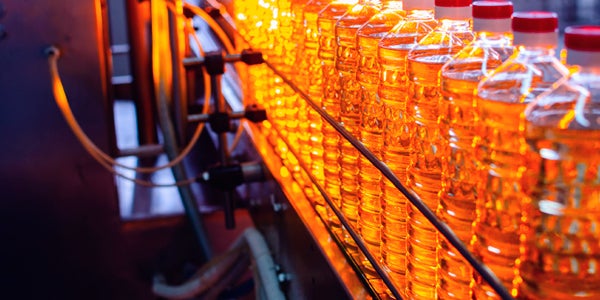
Key Benefits and Challenges of Automation
There’s no arguing the fact that many processes along the food production supply chain can benefit from automation. Business leaders can address lingering and recent difficulties such as labor shortages, quality and safety preservation, and the steady flow of goods by adopting automated systems. Even with this obvious knowledge, however, the industry has been slow to implement automation in food processing.
Those hesitant are barred by reasonable obstacles—obstacles preventing them from reaping the benefits of automation. What sort of challenges do business leaders face? Furthermore, what are the benefits of overcoming those challenges and adopting automation in food processing?
Food Processing Magazine reached out to several experts to see what might be hindering business leaders from adopting automation in their facilities. Reasons cited included the overall nature of food and beverage production, along with uncertainty surrounding new hardware and software. While understandable, operators must overcome these concerns to stay afloat in an evolving industry. They must see automation as a long-term investment in staying competitive.
Expenses themselves also prevent adopting automation in food processing for many facility operators—expenses extending beyond pure dollar amounts. Yes, the cost of the equipment itself is an important metric to consider, but businesses are also thinking about their overall team and the cultural expense of drastic change. Finally, installation inevitably slows production before it can ramp up. Operators must be prepared to face a short lull while facilities are equipped with automated technologies. They must also consider the downtime associated with training workers on the new systems.
Some operators are also skeptical of the true efficiency of automation. They doubt the robots will work as intended and don’t want to risk such a large time and money investment into a faulty operation. Perhaps it’s a matter of sounding too good to be true or just a general hesitation to fix something that doesn’t seem broken.
But if business leaders can move past those obstacles, the broad benefits of automation in food processing grossly outweigh the potential downsides.
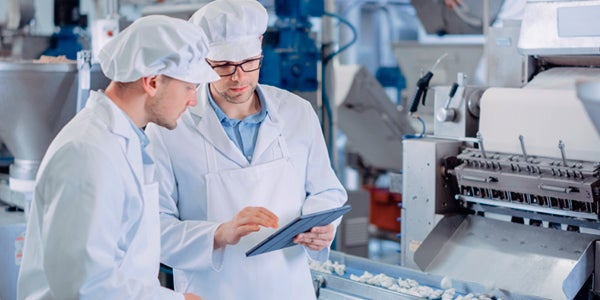
Improved Quality Control
Automation can drastically improve quality control through every step. With so many touchpoints along the supply chain, monitoring food quality can get complicated without automated processes. Maintaining the highest quality products with heightened awareness regarding food safety and traceability is imperative to success. Automation addresses these issues by improving line efficiency, maximizing ingredient use, and enhancing food safety by reducing the risk of human error.
Automation also maintains high levels of consistency among your products—consistency consumers don’t just appreciate but expect. Consistency doesn’t only dictate how the product looks but also how it tastes and feels. Automation ensures the same level of ingredients goes into a product every single time.
Increased Output and Productivity
Robots work around the clock. They never get tired or sick, and they never suffer the workplace injuries. When regularly maintained, inspected, and monitored, automation in food processing increases output and productivity several times over.
Automation provides real-time data analytics surrounding the process that you can use to improve efficiency even further. Consider a facility equipped with IoT devices. You can automatically collect performance data and immediately integrate it into your enterprise resource planning initiatives. Data also eliminates manual inspections, thus freeing up workers for more essential tasks.
Protection From Product Recalls
A recall is one of the worst things that can happen to any food processing facility. It’s damaging to their reputation, and it can cause harm to anyone consuming the affected product. Adopting automated tracking processes can significantly reduce recall damage by providing maximum visibility over your food supply chain. You can easily determine where products come from and where they’re going, ensuring that those facilities also follow rigorous industry standards.
Still, some recalls are unavoidable. Thankfully, automated software can identify where the affected product is and remove it from the supply chain before it ever gets to shelves.
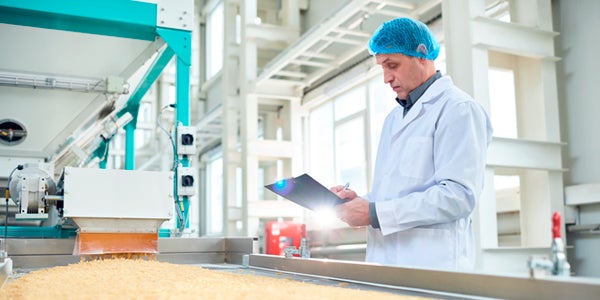
Getting Started With Automation in Food Processing and Dairy Production
Before advanced technology, workers in the food processing and dairy industries did everything by hand. As technology advances, new automated solutions are widely available and already in use across the industry. In the light of today’s labor shortages and rising inflation, food processing companies and dairy farms must capitalize on automation to stay ahead. What do they need to know, and what moves can they make to get started?
First, business owners must evaluate their operations for areas that could be improved by automation. Generally, time-consuming, repetitive manual tasks prove the best matches. Then you can focus human labor on more in-depth tasks.
Sanitation and hygiene are of grave importance when it comes to food processing. Automation can address potential health issues in this area, as robots are easy to clean and maintain in accordance with guidelines. Robots are also perfect for working in temperature-sensitive areas that may be too cold for continued human intervention.
Once you’ve identified your target areas, your robotics/automation supplier must understand the food processing industry. Industrial processing and food processing are two completely different sectors, requiring unique approaches. If your automation partners approach your facility like a car manufacturer, you will run into several roadblocks.
Aside from robotics, digitizing your food processing systems is another crucial step along your automation journey. Operators must consider which digitized processes are best for their business, and which are irrelevant to their overall goal. After all, you don’t want to waste money on a system you don’t need! Consider the following company-level digital processes and how they might relate to your food processing business:
- Data Collection and Analytics: As products move through the food supply chain, data-driven automated systems can keep accurate tabs at every turn. Data improves product traceability and identifies areas where you can strengthen your supply chain.
- eCommerce Platforms: eCommerce streamlines the ordering process and creates new opportunities for suppliers to build relationships with new business partners. A robust eCommerce system is imperative to bolstering your sales volume.
- Quality Management: You can utilize automated systems like post-harvest technologies for grading, selection, and sorting purposes in order to retain more control over the quality of your product. Better quality control makes you a more reliable supplier.
- Resource Management: Automated systems aim to produce more for less. They accomplish this by closely monitoring resource management to eliminate human error. The real-time data provides an in-depth look at your resource management systems, and how they can be improved.
Consider Your Automation Moves Today
Food processing and dairy manufacturing have arrived at a critical crossroads in their respective sectors. They can either embrace modern automation to combat labor shortages or continue struggling through the twin inflation/labor storms. As consumer demand continues to rise, automation is the obvious choice. Embracing technological trends in the industry is crucial to success—as is collaborating with a trusted financial partner like Minnesota Bank & Trust, a division of HTLF Bank to plan for the capital investment, understand the full implications to your balance sheet and calculate the ROI.
Business leaders in both industries may face hurdles on their road to automation, but the production, efficiency, and profitability benefits greatly outweigh the costs. If you’re looking to implement automated practices in your food processing or dairy manufacturing business, contact Minnesota Bank & Trust, a division of HTLF Bank to speak with a commercial banker with deep industry expertise.









